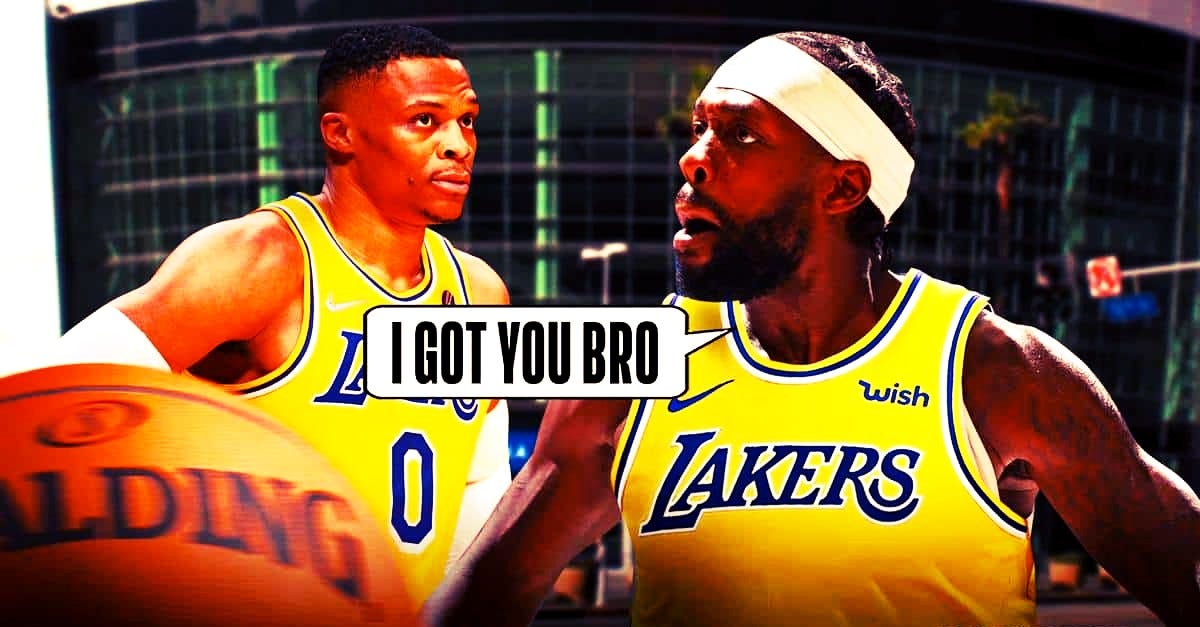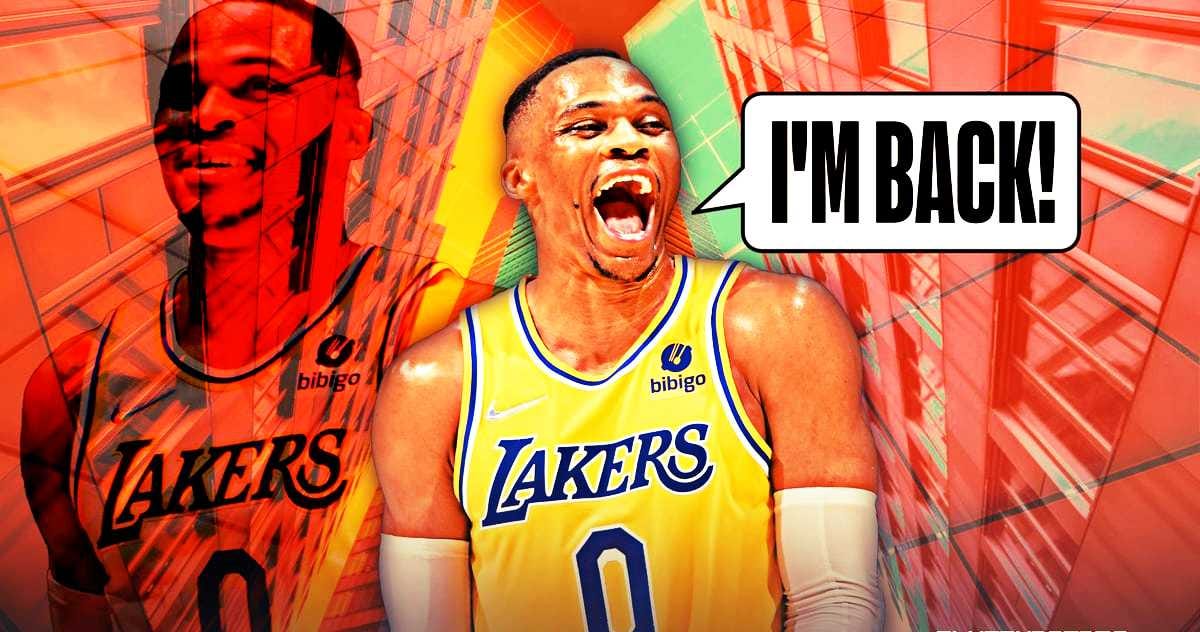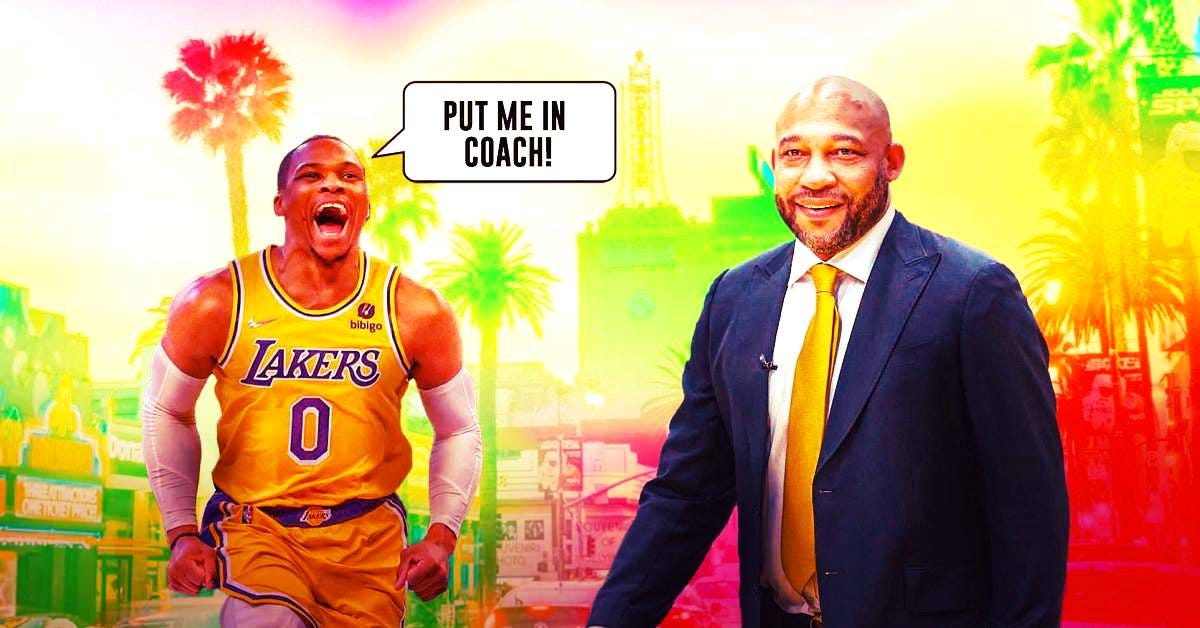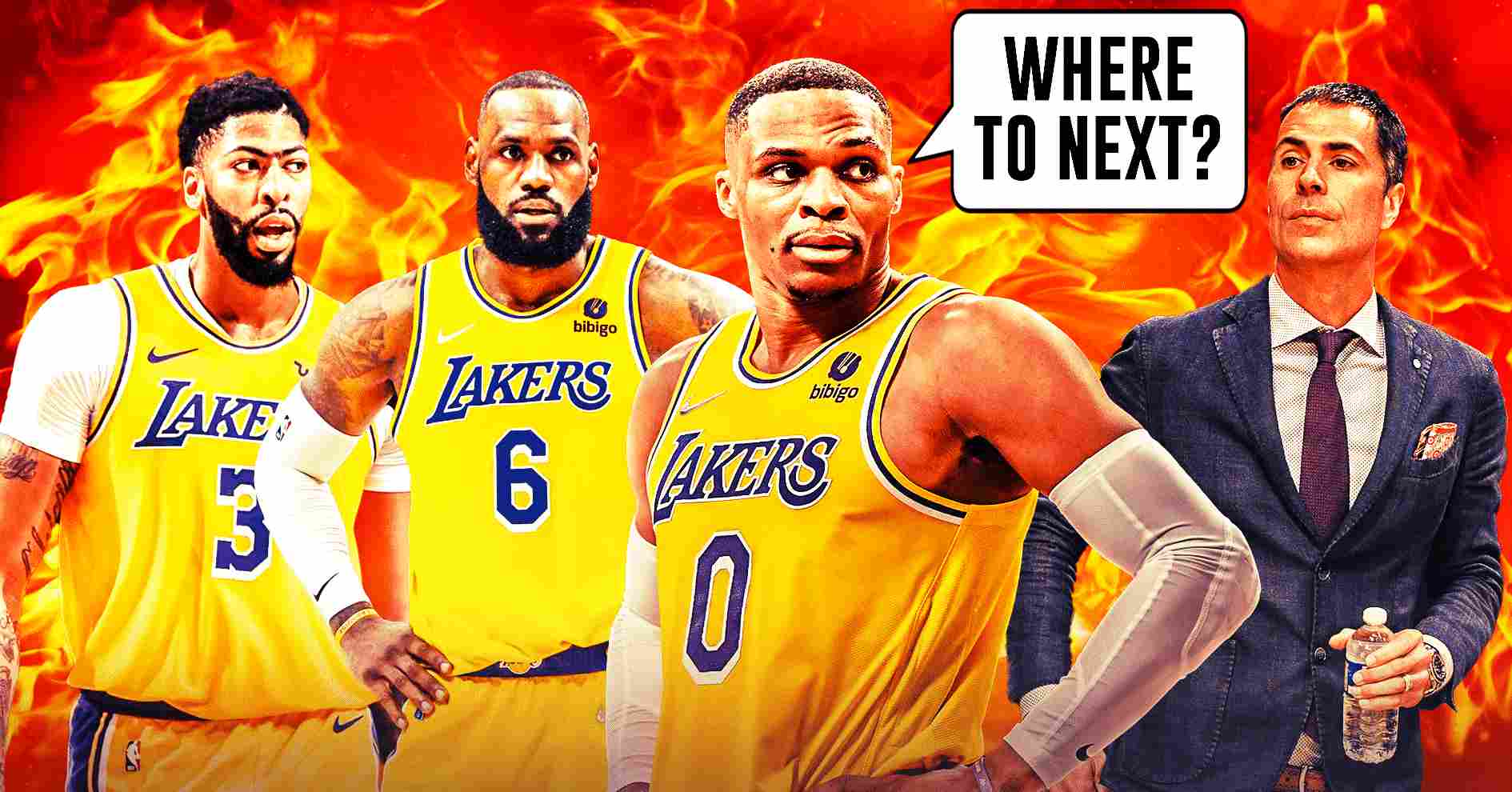If we’re to believe what we’re hearing online, the Los Angeles Lakers are trying to decide between going all-in this summer to build a legitimate championship contender or holding onto assets for a mega next summer.
Realistically, what the Lakers are trying to decide is whether sacrificing a long shot chance to win a championship this season would better enable them to make a series of transformative blockbuster moves next summer. Behind the scenes, it appears some in the Lakers’ front office believe they could have a unique opportunity for a superstar reload next summer with $35 million in cap space and three first round picks available to trade.
The Lakers’ challenge is they just signed LeBron James to a 1+1 extension with the ultimate goal of his retiring in purple and gold. It’s doubtful that 37-year old James would approve of the Lakers not trading their two picks. Finally, the last straw suggesting that the Lakers will ultimately give up the two picks and trade Westbrook was the recent signing of long-time Westbrook nemesis Patrick Beverley, thus giving L.A. four point guards.
Are the Lakers crazy for considering sacrificing this season’s championship window to position themselves for a blockbuster next summer where they sign Kyrie Irving and a juggernaut roster and launch their next dynasty? Alternatively, are the alleged limits the Lakers seem to be putting on every Russell Westbrook trade just a smokescreen and positioning by L.A. to convince trading partners they aren’t really desperate to trade Russ?
Let’s check the pros and cons and rank the Lakers’ three options to resolve the Westbrook situation: trade before the start of the season, trade before the midseason deadline, and keep all season and let contract expire.
1. Trade Westbrook Before Start of Training Camp

While trading Westbrook before the start of training camp could still happen, the Lakers’ current position is they prefer to keep him rather than give up both of their available first round picks to move him via trade.
While some in the Lakers’ front office are intrigued with the idea of just keeping Russ for the season and letting his $47 million contract expire, everything else that’s happening is screaming to trade Russell Westbrook. The current roster does not have sufficient 3-point shooting, wing size behind LeBron James and Anthony Davis, or experience at the starting center position with the unproven Thomas Bryant and Damian Jones.
Additionally, the Lakers traded for Patrick Beverley and signed free agent Dennis Schroeder, giving them four point guards. No way L.A. goes into the season with Westbrook, Schroeder, Beverley, and Nunn all on their roster. Strategically, the Lakers have already replaced Russell Westbrook as their starting point guard, leaving Russ in the very uncomfortably position of having to come into camp fighting to start or even make the rotation,
Realistically, the Los Angeles Lakers #1 priority should be to trade Russell Westbrook and picks for two proven quality starter players, even if it costs them both of their available first round draft picks without any protection. They should try to get the Pacers or Jazz to agree to one pick plus a pick swap as having an available pick at the deadline and two picks next summer could be critical if a key player becomes available via trade.
The Lakers cannot risk a second straight disastrous season and, as Jeanie says, the Lakers never tank. Thus, Pelinka needs to trade Westbrook to the Pacers or Jazz for multiple rotation players even if it costs both picks.
2. Trade Westbrook Before Midseason Trade Deadline

Should the Lakers pass on trading Russ before camp, they’ll get a second chance to move him midseason. The only question is whether there will be anything left to save of the season by the time L.A. decides to trade him.
Key dates are December 15th, when recently signed players can be traded, and February 9th, the midseason trade deadline. The Lakers will have played 28 total games as of December 15th and 56 games as of February 9th. That means 34% of the season will be over by December 15 when most players will be able to be traded and 68% of the season will be over by the February 9th trade deadline. Saving season goes from hard to harder.
The risks of waiting until midseason to trade Westbrook are significant. Most teams are not going to want to see what they have before making a trade, which means a trade is unlikely until a third of the season is over. Wait until the trade deadline and then two-thirds of the season is over. Deciding not to trade Westbrook before camp to possibly save one or even two draft picks at the cost of almost certainly tanking the season is dumb.
Once the Lakers commit to bringing Westbrook back, they also commit to trading him before the deadline because otherwise James and Davis will be their only tradeable contracts next summer if they let Russ’ contract expire.
Failing to trade Westbrook at the deadline would leave the Lakers with $35 million in potential cap space for free agents but no tradeable contracts other than LeBron or AD to combine with their three first round picks.
Once the Lakers committed to bring Russell Westbrook back, they also committed to trading him at the deadline for the players with multiple-year contracts that will be their trading chips for a mega trade next summer.
3. Keep Westbrook All Season and Let Contract Expire

Realistically, the only way the Lakers would have kept Russ for the full season would have been if new head coach Darvin Ham had figured out how to make him and the crazy roster work so they were in contention.
Once the fantasy of Russell Westbrook changing his spots and suddenly improving his shot selection and individual defense has been put to bed, there’s just no scenario where Russ finishes the year in purple and gold. Were that to happen, Russ would be an unrestricted free agent and the Lakers would have $25–35 million in cap space, three first round picks, but no tradeable players under contract to trade except for LeBron and AD.
In other words, the Lakers must trade Russell Westbrook before the trade deadline and the players traded for should be on reasonable and tradeable two-year contracts which would become expiring contracts next summer. The ideal position would be for the Lakers to have two or three players on the roster with contracts that would be expiring next summer that they could flip with their 2023 and 2029 first round draft picks for a superstar.
Bottom line, the Lakers’ strategy seems to be to trade Russ for the best package of rotation players with size and shooting as priorities. That trade must happen before training camp or before the midseason trade deadline. The Lakers need to convert Russ’ contract into multiple tradeable contracts that either end after or can be extended to end after the 2022–23 season, That would give them the best possible position to pull off a mega trade.
To be optimally positioned to pursue a third superstar or mega roster makeover next summer, the Lakers need to trade Westbrook for two or three rotation players who will become expiring contracts next summer.

Thanks, Tom, for a detailed analysis of the options. I don’t like the third option at all, of keeping Russ for the whole year. More than him not performing the way we’d like him to, he’ll ruin the chemistry. I’m not totally against waiting till mid season to trade him, but why? I’m not sure it makes it easier to get Kyrie (or Klay if he wants a trade out of SF). I’m very disappointed with the Lakers’ FO. If Russ isn’t traded, I’ll just watch the games on TV. Discouraged …!
Thanks for reading and commenting, Dean. What jumped out from studying the options were the following:
1. Lakers likely to seek 1 pick trade.
2. If not available new, wait to deadline,
3. Must have contracts to trade next summer.
I still think a trade is coming. It will be for one pick.
Which is better than nothing, That’s my bet. 60/40.
By the way, Sam Amick was on Sirius XM this morning and said Ham already had one practice with Russ and it did not go well and that’s behind the origin of the Russ off the bench story.
That’s very interesting, but not surprising. I think Ham is going overboard a bit with his pro Russ comments. I did think he’d be disappointed with the actual Russ. I hope it will propel Rob to trade him before the season starts. I’m positive Russ wouldn’t want to come off the bench, and Ham is not stupid to start him for long.
Not an official practice nor do I think coach Ham was there.
Not that it matters, the front office has an entire season of empirical evidence they either view differently or are choosing to ignore. One informal practice prior to eveything actually starting feels unlikelyto be the tipping point.
Scenario one is highly unlikely 90% chance Russ is on the roster to start the season.
Scenario two is, in my opinion, the most likely. Sometime between 12/15 and the deadline a Russ trade seems highly likely, 75% if you want a number. From an asset acquisition standpoint it also makes the most sense: there will be more assets available from teams that things haven’t worked out for.
Scenario three is the one that poses the most questions. Does it mean the Lakers think that they can S&T a superstar for 2, 3 on draft day, picks which would hard cap them but also probably be the scenario that yields the best fit/most talent? Are they targeting 3-4 specific players that could form a new championship core? Turner and Kuzma maybe? Is there a superstar edging out of their prime they think they can sign for $30ish mil? Only way the picks help next summer is in absorbing players into our cap space which is an interesting way to build a team…but it is possible.
The next couple weeks will be interesting.
One thing to remember…the cap increased by $11mill this summer. A similar increase would leave with $46mill in space next summer?
That’s already baked in, Here from Spotrac:
$34,340,543 Projected Practical Cap Space
https://www.spotrac.com/nba/cap/2023/
Not sure what those numbers mean. I might be missing something but I’ve seen $92mill in salary with a projected cap of $134mill? https://www.nba.com/news/nba-salary-cap-and-tax-level-expected-to-rise-in-2023-24
You are required to have 13 players on your roster. So they add minimum contracts to the open slots. That’s the difference between the two.
Ahh yes..the cap holds always trip me up.